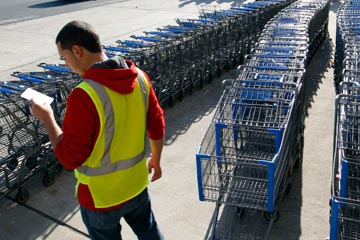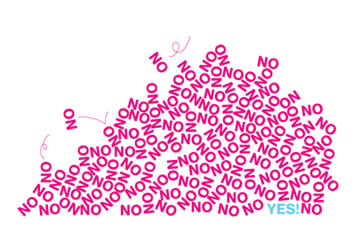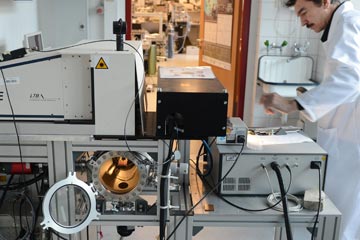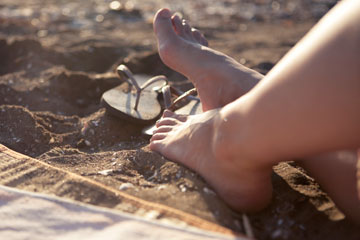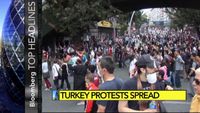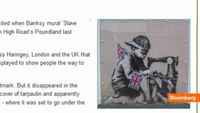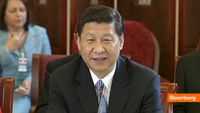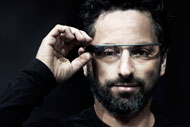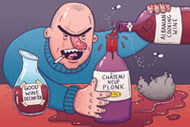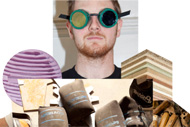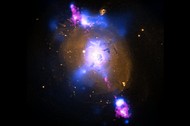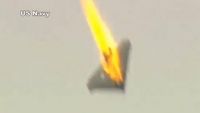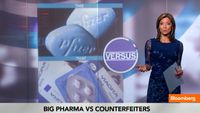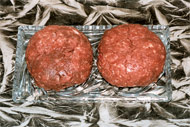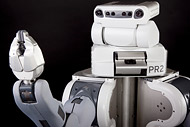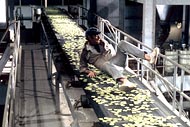Already a Bloomberg.com user?
Sign in with the same account.
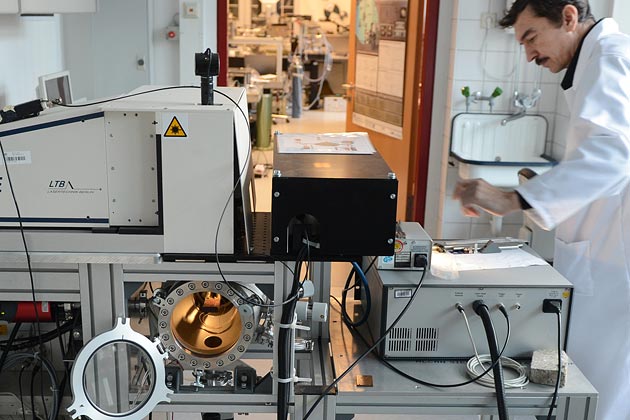
Photograph by Jens Kalaene/dpa/Corbis
A research assistent at the Institute of Planetary Research of the German Aerospace Center (DLR) works in a LIBS laboratory for laser-induced breakdown spectroscopy for the determination of elements
Reinventing Business
An Earthly Use for Space Lasers: Finding Food Fraud
Could laser technology developed to identify life on Mars thwart the booming trade in counterfeit olive oil?
The technology is called the “isotope ratio-meter,” a superaccurate laser developed over the past decade to measure gases in space—specifically, in the Martian atmosphere. Over the years, scientists on the laser spectroscopy team at the Rutherford Appleton Laboratory (RAL) have run into a problem common to extraterrestrial research: It’s not easy to book such a device on a mission to Mars. Meanwhile, the researchers have shifted their focus to a more practical, earthly application.
Lab tests a year ago suggest the laser might be a promising tool to fight food fraud. The team burned small samples of a specific type of olive oil and measured the gases it emitted to determine its type and provenance. The same kind of testing could verify the authenticity of honey and chocolate, as well, says Dr. Damien Weidmann, who heads the laser spectroscopy team at RAL Space.
Olive oil fraud in particular is a growing problem, one that European lawmakers this month tried to address by proposing a ban on refillable olive oil containers at restaurants and bars. (That proposal ultimately failed.) About €15 billion ($19.6 billion) worth of olive oil is traded globally every year, and while there’s no way to know exactly how much is cut with a lower-quality oil, chances are you’ve bought extra-virgin olive oil recently that’s neither “extra virgin,” nor even 100 percent olive oil, food quality researchers say. Again this year, olive oil topped the “food fraud” league table, according to the U.S. Pharmacopeial Convention. It’s a problem that dates to the time of Julius Caesar.
That’s where Weidmann’s laser comes in. It’s designed to measure and authenticate the molecular structure of a substance when converted from a solid or liquid to a gas—usually by putting the substance under a flame and burning it. The isotope ratio-meter isolates the basic isotopes of the substance tested to determine if it’s 100 percent pure or if it has been mixed with other similar substances. “For detecting food fraud, it is very efficient,” Weidmann says.
Now Weidmann is looking for commercial partners to develop smaller “shoebox-size” prototypes that could be used for field testing of olive oil samples. Testing the authenticity of olive oil, which is done only sporadically by food inspectors, tends to happen in labs, with expensive equipment and chemistry techniques. Weidmann, an applied physics expert, wants to make the fraud detection tool inexpensive and mobile. He estimates they would need another €225,000 to test and bring a smaller version of the isotope ratio-meter to market.
Tapping science to cut down on fraud is a new imperative of the International Olive Council (IOC). In mid-June, the international trade group, the world’s largest for olive oil producers, will convene a summit with scientists to develop new techniques and innovations to combat this centuries-old fraud problem. Whether the eventual authentication technology comes from physicists or chemists, the IOC doesn’t care. “The idea is to improve the research that goes into olive oil fraud,” says IOC director Jean-Louis Barjol. “It’s the first brainstorming session of its kind.”
Most Popular
- On 'Game of Thrones,' Shocking Carnage Proves the Internet Has Manners
- Hilton Kills Room Service in New York. It's About Time
- Why Can't McDonald's Offer Egg McMuffins All Day?
- Anonymous Prepares to Enter the News Business
- From ‘Battlefield Earth’ to ‘After Earth’: Why Do Scientology-Themed Films Flop?
- America's 50 Best Cities
- Alpha Dads: Men Get Serious About Work-Life Balance
- Yahoo Mail Users, Prepare for Creepy, Gmail-Style Ads
- Hilton Kills Room Service in New York. It's About Time
- Anonymous Prepares to Enter the News Business
- On 'Game of Thrones,' Shocking Carnage Proves the Internet Has Manners
- Alpha Dads: Men Get Serious About Work-Life Balance
- Funny Ads Make Brands Stronger. No Joke
- Behind the 'Internet of Things' Is Android—and It's Everywhere
- America's 50 Best Cities
- Obama's Data Team Totally Schooled Gallup
- Genetically Modified Wheat Isn't Supposed to Exist. So What Is It Doing in Oregon?
- How Fast-Food Eaters Split Along Ethnic Lines
- Behind the 'Internet of Things' Is Android—and It's Everywhere
- Get Ready for the Ugly Chinese Tourist
- Why the GOP Might Try to Impeach Obama Over Benghazi
- What's for Dinner, Big Mac or Egg McMuffin?
- Tea Party Darling Michele Bachmann Call it Quits



